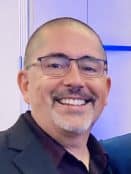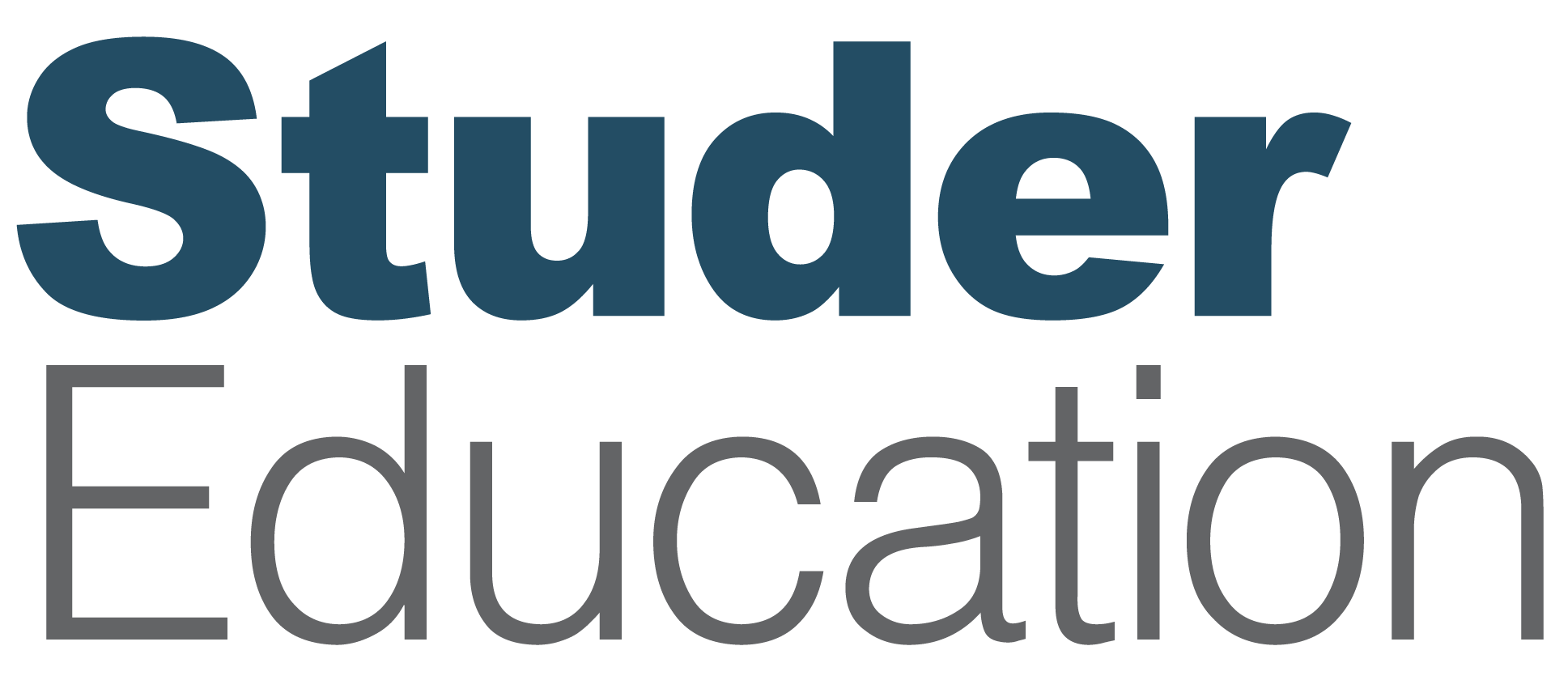
Visions in Education, a charter school serving nine counties across Northern California, is thriving—even as many districts face declining enrollment. Listen as Chief Operations Officer, Tom Tafoya, discusses their evolution to meet the changing needs of their students and families in their unique online environment.
Tom shares how his team approaches each day with a ‘1% better’ philosophy to drive massive efficiencies, grow enrollment, and even catch the eye of Amazon. Listen now and learn how he built a high-performing operations team dedicated to student success.
This episode addresses questions such as:
- How does a ‘1% Better’ philosophy translate into high-performing leadership actions?
- How can operations departments move toward innovative systems that accelerate student success?
Latest Episodes
Tom Tafoya: I think it’s just a matter of not settling for being mediocre or being average, quite honestly. I mean, we’re always trying to be looking for ways to get better.
[Intro music plays in the background.]
Introduction
Janet Pilcher: Hello everyone, welcome to the Accelerate Your Performance podcast. I’m your host, Dr. Janet Pilcher, founder and president of Studer Education.
Last week, we closed our live series with Dr. Heidi Eliopoulos. She spoke about her commitment to continuous improvement and coaching and why that pursuit just never ends. Today, we continue that theme of getting better every day with a leader who lives and breathes it, Tom Tafoya.
Tom is a veteran school administrator with more than three decades of experience. He serves as the Chief Operating Officer at Visions in Education, one of California’s oldest and largest charter schools. Vision serves over 7,000 students across nine county service area. In a time when many districts are seeing declining enrollment, Visions in Education is growing.
Today, we’ll talk about how Tom and his team are defying this trend by focusing on a 1% better philosophy, along with a dedicated commitment to service excellence. We’ll also hear about the importance of building a strong culture and the impact of hiring the right people. Let’s get started.
Interview
Janet Pilcher: It’s with great pleasure that I welcome Tom to our show today. Tom, welcome. It’s so great to have you with us.
Tom Tafoya: Thank you for the opportunity to allow me to share what we’ve done here at Visions in Education.
Janet Pilcher: Absolutely, and I’m looking forward to it. So let’s talk a little bit about your school. Your school is unique. Tell a little bit of your story at Visions in Education about the school and what they need to know to understand the context as we begin to talk through the questions today. So tell us a little bit about Visions in Education, Tom.
Tom Tafoya: So Visions in Education is a non-classroom-based charter school in California, Northern California. We’ve been in operation for over 25 years. We serve currently approximately 7,700 students across nine counties, which encompasses an area of about 9,200 square miles.
And I think one of the fun aspects of working here at Visions is we have evolved over time. And so non-classroom-based is a fancy edu-speak-y term for independent study, online schools, homeschooling, and all of those types of offerings fall under the umbrella of non-classroom based school.
And so what we offer is several programs that allow kids to not have to come into a school site for a, you know, families choose that for a variety of reasons. You know, some families are, you know, want to have a very, a big part of their students’ education. Some families, the students have health issues, mental health issues, anxiety, bullying, kids need to work, teen parents, expelled students. It’s a wide range of students that we get the opportunity to serve in this unique environment.
And the thing that really kind of happened with COVID is it made distance learning, online learning more acceptable. It’s more mainstream now, I think, after, after COVID. And so I think what we’re finding is families are looking to us for a variety of reasons.
Like I mentioned, the types of kids we serve are all very different and unique. And we have different programs to try to kind of line up to all these different kids’ specific needs and requirements. And so that’s the part that’s been fun.
I’ve worked in public education myself for 35 years. So I’ve been at school sites, you know, district offices and such, but it’s been fun here to be at Visions to kind of evolve and kind of change with the times to match the changing needs of our families.
Janet Pilcher: Yeah. And, you know, it’s so good that you all are doing what you do because I do think even before COVID, but I think COVID accelerated families really wanting choice for their students and really having those variations of choice. And what a neat, neat mission that you all have is really to serve a variety of students and be able to serve their families in that way. So you’re providing a great service to families, Tom. And I know you see it every day.
So let’s talk a little bit about, I love this philosophy, 1% better philosophy, getting 1% better every day. And you certainly do that on your team. Amy’s talked a lot about the work that you all do. And in the operations department you oversee, you have a district services survey that we administer and your scores are very high. So how does that 1% better philosophy translate into how you lead your people?
Tom Tafoya: I think it’s just a matter of not settling for being mediocre or being average, quite honestly. I mean, we’re always trying to, looking for ways to get better. And, you know, that can be challenging for some folks who are, who kind of like consistency and aren’t comfortable with change. But, you know, we try to do it. And that’s why the 1%, not 10% better. We’re constantly trying to improve, always looking for ways to improve our practice, improve our systems. You know, it’s a unique thing, you know, that my team that have been with me, I’ve been here at Visions for nearly 22 years. And I have a core group of folks who have been with me for, someone with 20 years, 19 years, 15 years.
Janet Pilcher: Wow, Tom. That’s incredible.
Tom Tafoya: There’s a group of individuals who are my senior leadership, who we’ve worked together for over a decade. And I think that has allowed us to kind of, you know, we’ve pushed each other and we’ve stretched one another. But I think everyone is committed to the mission. So I think that’s really important. And so my thing is to get better and always try to see what we can do differently. And to me, that’s the fun of working in.
Janet Pilcher: Yeah.
Tom Tafoya: We get to create, we get to create, you know, we’re in operations that can be seen as a lot of boring stuff. But we’ve created our own systems and we’ve been really innovative in a lot of things we’ve done. That makes it a lot of fun.
And so by having these core group of guys with me, who are, you know, in our technology area specifically, is allowed us to build technology, the infrastructure and systems that just don’t exist anywhere else. That allows us to leverage our people to, you know, to get, we talk about this one plus one equals five, you know, it’s kind of that notion of, you know, we don’t have to add one for one as things, as we enroll more students, we don’t need, we could leverage the technology and better processes to, to serve more kids without necessarily having to add, you know, one for one. And so we like to say it’s one plus one equals five, you know, two or three, whatever.
Janet Pilcher: I love it. Well, I’m sure you, you know, as I think about your leaders who have been with you all these years, I mean, that speaks to your leadership and speaks to your high performance and your own leadership.
And, you know, Tom, I’m guessing like when you all are connecting and looking at that 1% better, you’re probably looking at data that comes in and looking at what’s working, what’s not working and really trying to drive those improvements as a team. Like that probably is just second nature to what you all do. That would be my guess.
Tom Tafoya: Yeah, you know, when you say that, it is kind of that because we’ve been together for so long. So there’s something to that, the longevity of being able to hire the right people, and who are committed to the mission. I think that was it more than anything because, you know, we’re serving an at risk population and many of the guys that I work with, they all have their story. We all have our story. And I think that’s been a big driver for each of our willingness to kind of go that extra mile and challenge and push through and want to do that 1%, 10% better because we all have got our story around how, you know, a school like ours is making a difference and other kids who, you know, we all, we were those kids.
Janet Pilcher: Yeah, I got you.
Tom Tafoya: And so I think there’s a, that’s a big component of that. And so having that, people who are committed to the mission and hiring right is enabled us to, you know, I think they’ll suffer, they’ve suffered through for me or for 20 years.
Janet Pilcher: [laughs] I doubt that.
Tom Tafoya: You know, I think because we challenge, we push each other and we challenge one another, but it is always to get better to serve students, all students. I think each of us, again, because we all have our stories, you know, I have some tech guys who could be working in Silicon Valley or doing whatever, making way more money if they wanted to, but they choose to be here because of the mission. And that, we are the beneficiary of a lot of that tech skill that is with us. And we get to leverage that to great, build great systems that allow families to access ordering of materials and services faster than most anybody. And allows teachers and administrators to focus on the work that they need to focus on, which is ensuring student success instead of having to do inefficient administrative issues. Cause that was kind of, is that commitment to tha, I think is, you know, contributes to those scores that we’ve, we’ve enjoyed.
Janet Pilcher: Yeah. And building that true alignment to whatever that mission is, it’s really a nice work with your team in that.
And so let’s talk a little bit. It’s paid off for your school because you’ve increased your enrollment, whereas you know, many in California and across the country have seen decline. And given the statewide trends, what do you think has made the difference? I know we’ve talked about just the attractiveness of the variation of the types of students that you can recruit in, but you know, what’s making your school attract and retain those students?
Tom Tafoya: Yeah, I think it is, having been in other school districts and I think it’s the partnership we have with instruction is a big part of that because I could build better systems and we could work really hard. But if the instructional programs aren’t delivering on their end, kids are going to leave.
And there’s years where we were constantly having to deal with lots of withdrawals, you know, so we were churning through kids. We refined our marketing and our messaging, our enrollment practices. I can get a computer into a kid’s hand within a span of days upon enrollment, across 9,200 square miles. We can do all that. But if they’re not getting served well when they come to the program, they’re going to leave.
And there are times when we were challenged with higher withdrawal rates and I think, you know, the last few years there’s been a big effort. Our withdrawal rates are going down now and kids are staying, we’re getting them and they’re staying, and I think, and that’s a great thing. I mean, being able to provide really good services to kids, you know.
During the pandemic, I don’t know if there was an article, there’s so many crazy articles you read, kids not getting served well with technology. The two little Hispanic girls at the Taco Bell having to get on the internet, sit on the outside of the restaurant to get internet because the school districts couldn’t provide that to them.
I use that image to say, we got to do better with what we do. And you know, like I said, we get computers out the door within hours of an enrollment appointment being completed. And if the kid’s low income, we’re sending a mobile internet hotspot to them. That’s part of, you know, what we provide.
And so, you know, we’re an online school, so if they can’t get him on the system, they’re not going to be doing work. And so we’ve made an effort to make sure those processes are really good.
And then, you know, instructionally, they’re providing better services. You know, we’ve hired social workers, counselors, or types of student activities and clubs. And so there’s been an effort across the organization to really bring more engagement and services to kids. And they’re using our technology to simplify and create efficiencies to do all of those things. And so I think it’s a combination of building systems that could support the delivery of great instructional services and supports and programs. And I think it’s that partnership.
Janet Pilcher: Yeah. And I love that. And when you were talking about what you’re, you’re so into providing, you see yourself as a service, you know, to providing that to others, to the people that work there, to the families, to the students. And that’s what drives you all and that partnership rather than just show up. You know, sometimes in operations department, people show up to get a job done and then they leave. You know, that’s not what you all are doing. You’ve got that intent on really providing the service to support the people who are doing the groundwork, right at boots on the ground with students and their family so that you can make sure nothing gets in their way.
You know, that’s so important, Tom. It’s so important for the operations, parts of our districts and our schools to, you know, to really be focused on that. So it’s a great story and great work that you’re doing.
Amy mentioned, so a little bit of a shift here, but Amy mentioned that you all developed. I can, I can see this, a novel solution for your district early in your career that caught Amazon’s attention. And I know you can probably tell me some things and not others based on probably what that is, but talk to me a little bit about that. Why were you noticed by Amazon?
Tom Tafoya: Yeah. So when I got to Visions, I didn’t know anything about ordering textbooks or online. There was no online anything. I came in 2004. Amazon was not Amazon.
Janet Pilcher: [laughs]
Tom Tafoya: So we had different partners, vendors that were trying to help us get materials for kids because we are an online independent study school, we don’t have brick and mortar sites. And so at that point, we were shipping lots of books and we were actually providing desktop computers with CRT monitors and a box. And it was a mess. And we were, we were drowning under that model and it was a struggle.
And so when I arrived, you know, I was like, well, how are we going to get the, you know, we couldn’t process orders fast enough. We couldn’t get materials to all of our kids. We had our own little mini warehouse in the city we’re operating out of. But our kids are spread out all over the place. And so that really limited our growth to not have a system that allowed families and teachers to order without having to bring a piece of paper or fax a piece of paper in. And so over time, we just started, you know, “hey, we got to make this better.”
And so, you know, we’ve, over time, we saw a system. “That’s a good idea. And that’s a good idea. And that’s a good idea.” And we just started cobbling together this and then we brought, we got some, some of the guys, like I said, some of the guys we hired right out of college and they’ve been with us for 20 years. And so there was a collective of us that kind of have been through many different iterations of this system that we called L-pad.
L-is for launch and Pad is, you know, L-pad. And so it evolved over time. So where we were, it’s an online purchasing system that basically allows a teacher or parent to remotely place orders for materials, technology, or services. And so, you know, at first it was just a place, an online purchasing system, a purchase order system of sorts. And as the technology evolved within the industry and, you know, we started to find vendors who were willing to create integrations to, instead of just having them online purchasing system where a parent would request something and then we’d have to go jump to the website, place the order, rekey it, pay with a credit card and do all that rigmarole. There was vendors as the technology evolved that would allow us to directly integrate with their website. So a parent would log into our site and we’d pass them in directly into the vendors website and based upon the integration, they would know that the students are coming from Visions, they have a student budget, and there’s a process that we created to allow us to place those orders seamlessly.
And eventually we found that Amazon had the same feature functionality. And, you know, we were at the time, maybe we were doing $100,000 a year with Amazon because we had to do them this one off with a credit card because they don’t take POs, there’s no blanks for Amazon. And so it just evolved over time. And, but Amazon was probably the, you know, we caught them right when they were on their upcycle and, you know, connected with some people on their end that wanted to develop this.
And so we were actually one of the first schools that kind of put this in place. You know, we went from doing about $100,000 a year on credit cards to now nearly $3 million a year.
Janet Pilcher: Wow, yeah.
Tom Tafoya: Through this process, so when you see that kind of growth, that catches Amazon’s attention. And so we were invited to help present at one of their conferences, and we’ve had many conversations around how could we partner with our software with them. Not sure where it’ll go, but we continue to make, you know, enhancements, and they’ve been a great partner where, you know, we want to make things change. They work with us because it helps them and they try to take what they learn from us and apply it to all their schools across the world, really. So there’s things that they help us with that just constantly make things easier and better for our families to place orders.
So that’s been a great, great opportunity for us to really streamline our process. Because again, when you’re, you know, we’re $100 million a year operation now. And when we started out, we were $20, $25 million or something. Now we’re $100 million plus you’re spending tens of millions of dollars on materials.
And when we’re able to do that super efficiently with these types of integration, specifically the one with Amazon, we don’t have to have a bunch of people paying invoices, little pieces of paper, onesies, twosies, hundreds of invoices. I used to work in a county spayable at a district. It was a, it was a nightmare. Tons of pieces of paper and nothing was automated.
But now I could process millions of dollars in transactions, and I can make two payments a month to Amazon, and it’s a streamline and really simplify how we do things for our families and as well as pay those bills.
Janet Pilcher: Yeah. It’s so good. And, you know, again, it’s that, that trying to always find a solution that’s better and better, that 1% better. That’s just a great example of how that just becomes part of what you do.
You know, as we close today, I mean, what you’re doing and the time that you’ve spent with your team and what you provide as a service, a very satisfactory service to families and students and the people that work within your system. You know, what advice do you have for your colleagues on how to build an effective culture and an operations focused team? Let’s close with that. Like what, you know, what have you, you’ve been doing this a long time? So you’ve got a team that’s functioning, high-functioning.
Tom Tafoya: I think number one is hire right.
Janet Pilcher: Hire right, ok.
Tom Tafoya: And that sounds so cliche-ish, but it really is important.
Janet Pilcher: Yeah.
Tom Tafoya: It’s not always a popular thing, but you got to hold people accountable. People want to be on a winning team. And if you let people be mediocre, unfortunately, some of them will navigate, you know, kind of towards that. And so you want to make sure that people understand that the clear expectations and, you know, that’s always a challenge, right? Because it’s not easy to have those types of conversations and to hold people accountable, but it’s what you got to do.
If you hire right and you have high performers, they want to be on a winning team. And if you allow people to not be high performing for whatever reason, that is a drag on the rest of the people and the system. I think that’s the thing that’s, I’ve tried to push. You know, I hold myself accountable. I push myself and I push my people and I’ve been fortunate to have people who have risen to the occasion. So that’s that hiring right.
And I think, again, you know, when we, you know, when these people are committed to the mission, you know, they’ll go through walls for you because they all know we have our story. And so I think there’s that shared sense of commitment to what we do. And even if we push each other.
And I know that’s atypical, I think. It’s been a pleasure, you know, this, I couldn’t have done it without the team of people that are around me. And, you know, these, a lot of these folks are just great men and women who are committed to our mission, couldn’t have done it without them. But I think it is you hire right, hold people accountable.
Janet Pilcher: That’s right. Yeah. That’s it’s such a great, I mean, that’s such a great way to say it. I mean, and it’s that commitment to that mission. And you’re right. When you build those high standards, people know what the expectations are. They drive to those and anyone that doesn’t drive to those will pull the team off, off center.
So your leadership is important. The work that you do in operations is important. And the mission that you have for what you all do at Visions is extremely important for what you do in serving the students and families. And you, you are a model of that, Tom. So thank you so much for the time today and sharing your story and your team’s story with our listeners. Thank you.
Tom Tafoya: Well, thank you for the opportunity to brag on my people because we couldn’t have done it without them.
Janet Pilcher: Thank you.
Conclusion
[Outro music plays in the background.]
Janet Pilcher: Thank you, Tom, for joining us today. It’s clear that your leadership and operations directly contributes to the success of your employees, students, and families. And I love what you said, that when you build a high performing culture with a clear commitment to the mission, people will rise to the occasion. I’ve always found that to be true as well, Tom.
If you enjoyed this conversation, you won’t want to miss next week’s episode. I’ll be speaking with a Director of Finance who will share how he’s leading change in his district, all stemming from the power of a feedback loop. Make sure you’re following the show so you don’t miss his story about how feedback is a gift.
Thank you for tuning into this episode of Accelerate Your Performance. I look forward to seeing you next time as we continue to work together toward organizational and leadership excellence. Have a great day, everyone.
Featured Guest

Tom Tafoya, MS, MBA, CPA
Chief Operations Officer • Visions in Education, CA
-
Janet Pilcher President








